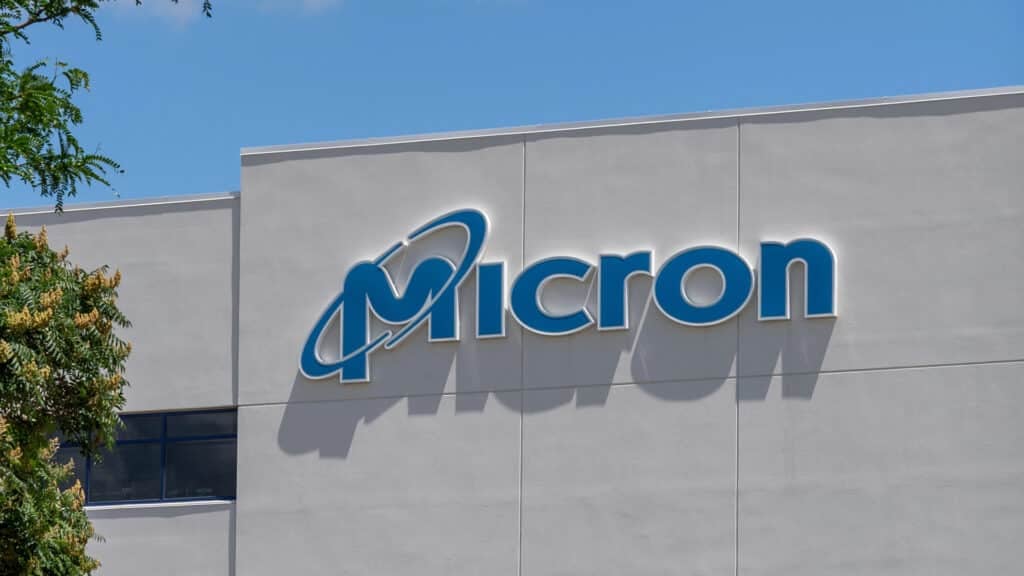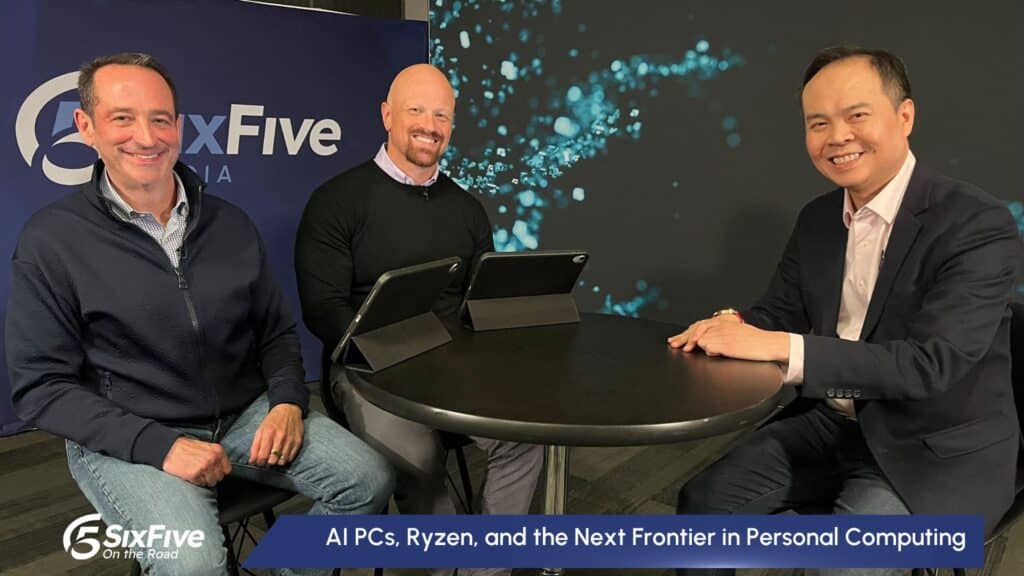In this episode of The 5G Factor, our series that focuses on all things 5G, the IoT, and the ecosystem as a whole, I’m joined by my colleague and fellow analyst, Steven Dickens for a look at 5G news and what’s going on that caught our attention.
Our conversation focused on:
Red Hat Becomes the Primary Infrastructure Platform for Nokia’s Core Network Applications. Nokia and Red Hat reached an agreement to integrate Nokia’s core network applications with Red Hat OpenStack Platform and RedHat OpenShift. 350 personnel at Nokia will be transferring to Red Hat as Nokia moves on from developing the platforms that host its software. The duo will jointly support and evolve existing Nokia Container Services (NCS) and Nokia CloudBand Infrastructure Software (CBIS) customers while developing a path for customers to migrate to Red Hat’s platforms. We delve into the implications for the 5G ecosystem and telco cloud journeys.
Azure for Operators: Build 5G Modern Connected Apps at the Edge. Azure for Operators (AfO) is targeting the advancement of 5G modern connected apps across cloud computing fabrics, especially the edge. AfO brings Azure Public MEC, which leverages the mobile operator’s public 5G network connectivity, and Azure Private MEC, which brings the power of the cloud to the enterprise’s own infrastructure, as key solution offerings. We explore why AfO can move the needle in driving 5G modern connected apps across 5G environments.
HPE Completes Acquisition of Private 5G Specialist Athonet. With the acquisition of Athonet, HPE sets the company’s sights on bringing private 5G and WiFi together to augment and innovate enterprise connectivity, including using HPE GreenLake’s edge compute and security/SASE portfolio assets. HPE’s Aruba portfolio is already widely deployed throughout global WiFi implementations putting HPE in a strong position to drive private 5G and WiFi services and capabilities, including mixed network scenarios, according to customer needs. HPE also gains 450 more deployments across major verticals such as healthcare, transportation, utilities, and government. We assess what the completion of the acquisitions means for the private 5G market and the overall 5G ecosystem.
Watch The 5G Factor show here:
Or stream the audio on your favorite streaming platform:
If you’ve not yet subscribed to The 5G Factor, hit the ‘subscribe’ button while you’re there and you won’t miss an episode.
Disclaimer: The Futurum Tech Webcast is for information and entertainment purposes only. Over the course of this webcast, we may talk about companies that are publicly traded and we may even reference that fact and their equity share price, but please do not take anything that we say as a recommendation about what you should do with your investment dollars. We are not investment advisors and we ask that you do not treat us as such.
Transcript:
Ron Westfall: Hello, everyone, and welcome to The 5G Factor. I’m Ron Westfall, senior analyst here at Futurum Research, and I’m joined here by my colleague, Steve Dickens, fellow analyst and VP practice lead of our cloud practice. And today we’re going to dive into our show called The 5G Factor, which is all about the 5G ecosystem, as well as related technology, such as IoT, and all the things that are really going on across the ecosystem that have caught our eye recently.
So, Steve, great to see you, and welcome to your initial foray to The 5G Factor. How’s it going? Feel excited?
Steven Dickens: It’s good. It’s good, Ron. Well, we’ve been talking about this for a couple of weeks. I’m super excited to help you reboot the show and be a wingman for you as you rock the 5G edge and sort of IoT space. If I can help get this podcast back on track, that would be fantastic. Excited to be here.
Ron Westfall: Well, thank you so much, and I think already we’re off to a great start in that regard. As you know, 5G doesn’t rest. There’s always something going on. And so I think with that, we can kick off to the first topic that really caught our eye.
One recent development that has I think significant 5G implications is the development between Nokia and Red Hat, where Red Hat will become the primary infrastructure platform for Nokia’s core network applications. And a part of this arrangement includes 350 people at Nokia being transferred over to Red Hat. And from there, Nokia’s software will be developed or will be hosted by Red Hat. So this is a pretty major development.
And one key reason that Nokia is doing this is to aid its telco clients in terms of advancing their cloud journeys. That is avoiding lock-in with a single cloud provider, being able to have choice, really, in how they go about working with different cloud providers and optimizing quite simply, their 5G deployments.
And as we know, Red Hat can be deployed at AWS, Azure, Oracle, Google Cloud, as well as in basically any private cloud setting out there. So that part is music to the ears of the telcos, and this also gives at least Nokia’s telco clients an abstraction layer that gives them more flexibility in selecting which cloud providers they work with.
Now, there is one potential trade-off. What if somebody prefers to work with, say, a VMware or a Wind River and so forth? However, I think what we’re seeing is that telcos, at least in the early stages of potentially having more workloads hosted on the cloud, are looking at a full integration approach, something that simplifies their transition and perhaps further out will become more, I guess you could say open about how they select suppliers. But there’s always going to be another telco that is not going in that same direction. I think Dish Network is a good example of an operator who’s really doing a breed approach in terms of integrating all these different solutions. And so stay tuned on how Dish Network progresses with its what can be still called greenfield approach.
But enough of that. Steve, from your perspective, what does Red Hat bring to the table? What do you like about Red Hat and the implications of this arrangement?
Steven Dickens: Well, I mean, I think it was fascinating for me. We see a lot, and you and I cover and our team covers a lot of collaborations. Insert vendor plus other vendors, those two vendors collaborating together on a technology partnership. I think you touched on it, and the interesting piece for me is this was more than that. There were 350 employees from Nokia transferring over to Red Hat. I think that means for me, Nokia’s kind of realizing, “Hey, whilst we did have a container platform, it was never really going to be a market-leader.” It was probably just an acknowledgement from them of, “Hey, yes, we need a containerized solution in our stack. We’ve tried to attempt to sort of get traction with our own.”
A lot of those operators that knock your interfaces with are making independent choices around the Kubernetes and container sort of platform and don’t see that as potentially a vertical component with a Nokia and Ericson, one of those type of providers, and they see it as a more horizontal component to their architecture.
Against that backdrop, if you’re looking at who’s got the best sort of horizontal container layer, there’s two or three vendors in that space. You mentioned VMware, SUSE would be another one. But I think the predominant one in the telco space would be Red Hat and with OpenShift. So I think it makes sense to me for Nokia to start to be pragmatic about where it puts its investment dollars and its people to be able to say, “What are we good at? What are we best partnering with somebody to provide that layer in order to get traction?”
So I think this makes perfect sense to me. I think as I say, the interesting piece in the press release was the transfer of the employees. You don’t normally see that in a technology partnership. So pretty emphatic from Nokia that it’s not only just going to select Red Hat as its preferred sort of vendor of choice in the stack, but also start to exit from the space themselves.
I think you mentioned VMware. It’s going to be interesting to see how that pans out with the Tanzu stack, particularly in the operator space. Obviously VMware’s got a huge presence in the virtual machine space. There’s a lot more competition in the Kubernetes space. You’re not only seeing the likes of Rancher Prime from SUSE, but you are also seeing a lot of the cloud providers, the vendors that you talked about. Google’s got its own Kubernetes deployment. So has Azure. So has AWS.
So I think it’s interesting across this horizontal sort of Red Hat layer as those operators think about not just on-premise but also on the cloud, and keeping that Kubernetes layer consistent across. So I think interesting. As I say, the key takeaway for me was the emphatic-ness of Nokia moving employees over to Red Hat as part of this transition.
Ron Westfall: Yeah, I think you hit the nail on the head, Steve. And I think that was important, bringing out the container aspect here, and the fact that, yeah, it’s a hybrid cloud world, and hybrid cloud basically is joined at the hip with multi-cloud. And I think it can be an opportunity for Red Hat and perhaps a willing cloud partner like Oracle to advance to what could be called the multi-cloud mission, if you will, allowing telcos, but any organization out there, any enterprise out there that just wants more common sense, flexibility, and being able to use multi-cloud. Today it exists but it tends to be siloed off. So people use AWS for one application and then Azure for another application. And yes, you do get the benefits of multi-cloud, but it’s not interconnected. It doesn’t interwork in any convenient and easy to use way.
And so if you’ve seen the European telcos, for example, band to gather to support initiative called Sylva, which is meant to alleviate that issue, and we’ve seen Oracle Cloud for example, to be very specific about, “Hey, we’re here to really make multi-cloud a reality, and get away from egress fees and the silos that the cloud providers, ironically, have created in many instances.”
So yeah, no, I think this is a pragmatic move by Nokia rather than waiting another two, four quarters to say, “Hey, there are other players out there that can be better at the hybrid cloud and container aspects of what we want to accomplish in terms of making 5G a lot more accessible.” Especially with 5G standalone now becoming more mainstream, but also on the horizon, 5G Advanced. And I think that’s where we can see a lot of use cases taking off.
And which leads me to our next topic, cloud again, but it’s also vast 5G implications and what’s going on with Azure for operators. And currently, one of their major initiatives is building 5G modern connected applications, particularly at the edge. And I think we all understand that the cloud is swiftly expanding into a highly distributed computing fabric that is broadly available and powered by the network infrastructure, as well as an evolving new approach to application and connectivity. That is, again, what we already touched on, a lot more flexibility, being able to potentially build microservices, use things like network slicing and so forth. And what we’re seeing with modern connected applications are that they’re taking advantage of this distribution, but also lower latencies that 5G introduces, as well as network intelligence. So their applications are having a lot more awareness about what is going on with the network, but more importantly, certainly the IT overseers, administrators will have more information about how to optimize, for example, in industrial IoT application as a result of this.
But it also it’s pushing compute power out further into the edge. So whether you’re talking about a device or hard to reach areas such as rural areas, or maritime areas and so forth, Azure is now taking this extra step, Azure for Operators, to really make 5G more readily available. So I think this is a good move on their part. And they have two key components that make up the solution. There are others, but the two main ones that they’re kicking off with is called Azure Public MEC, or Multi-access Edge Compute. And it’s looking at leveraging the operator’s public 5G network, thus Azure Public MEC. And this allows developers, I believe, to be more successful in developing applications that leverage the public network. So that certainly has consumer applications in mind, but also certainly on the enterprise and business side.
So for example, something that we’ve heard a lot about, extended reality, including augmented reality and virtual reality, I think it can gain more traction. And I think we’re seeing virtual reality actually being successfully paired with those emerging digital twin technologies, for example. So this is something I think that we’ll be definitely keeping a close eye on in terms of how these applications are gaining traction, but certainly Azure for Operators’ role in this.
Now, the other part is Azure Private MEC, and that brings the power of the cloud to the enterprise’s own infrastructure, thus the private nature of it. And so this allows enterprises to combine cloud-managed edge servers, networking capability services, and that also gives them pretty much the control that they definitely prefer in terms of being able to have the security across their entire network implementation, including the 5G part. And that’s why we see private networks gaining more traction over the last couple of years plus. Now, there’s been some over-hyping of it, but I think 5G private networks are definitely going to be growing steadily and becoming a more important part of the overall 5G picture and ecosystem.
And with that, Steve, from your perspective, how do you see, again, the cloud playing a role here in terms of moving 5G forward, and for that matter Azure’s proposition here?
Steven Dickens: Well, I mean, we’ve seen the cloud probably over the first 10, 15 years be that horizontal layer, providing compute as a service. We’re seeing the sovereign clouds now develop. We’re also seeing industry specific clouds. IBM’s been making some traction in this space with financial services. We’re seeing Azure here focus on the telco space. So I think you’re going to start to see more industry-specific clouds, whether that’s regulatory frameworks, whether that’s technology architectures, kind of putting a spin on those platforms provided by the big cloud providers, uniquely tuned for the demands of specific industries or use cases. And we’re seeing Azure obviously made that step with operators. I think then so on-trend starting to see that sort of industry specificity from the cloud providers.
I think the other piece and the piece that was interesting that you discussed is kind of what’s happening out at the edge. We’re seeing a sort of confluence of factors there. It’s not only having the 5G technology, it’s having the sensors, it’s having the management frameworks and the automation. We’ve seen some good steps forward with lightweight Kubernetes distributions being able to be tuned for the edge.
So I think what you’re seeing is a combination of factors coming together. The sensors are getting better, the management plane’s getting better, the network’s getting better. So Azure stepping into that space and doing more for a 5G infrastructure with this new Azure for Operators makes perfect sense to me. You’re going to want that edge deployment, whether that’s private wifi, private 5G. Whatever the end technology is out of that edge, you’re going to increasingly want that connected back ultimately to a cloud platform. So I think Microsoft getting closer to the edge and almost all the way out to the far edge makes perfect sense for me. It’s a good move.
I think it’s going to be interesting to see the partnerships. We talked about Nokia and Red Hat. I think Microsoft’s going to have to partner in that space, and it’s a different set of partners. But obviously Microsoft’s got those partner networks and can make that work, so bullish on this. I expect to see more.
Ron Westfall: Amen. Yeah, no, I think that is exactly right. And yes, Microsoft clearly has a portfolio that is well-suited for advancing the edge cause, as we can characterize it. Certainly when it comes to AI, Microsoft has the technology and the assets to leverage that, and making the edge more effective for 5G use cases. And I think, yeah, this is a good example of Microsoft being able to drive more of what can be called use case networking on the enterprise side that is better able to support industrial automation, robotics, et cetera. All the things that I think are capturing not just the imagination, but also very practical pragmatic use cases that enterprises deeply value, and having a cloud partner that understands the edge bring the resources to optimize the edge will be a difference-maker as 5G matures and private 5G becomes all the more mainstream. And on that-
Steven Dickens: Well, I think it’s interesting you touched on AI in that space. I think getting lightweight AI as far out towards the far edge as possible is starting to become more realistic. Some of these models are getting smaller, the container management is getting down to single node rather than the three node. You’re starting to see a confluence that you were seeing a lot more of the hardware vendors put more compute capacity and capability further out into the edge. I was out with Lenovo a few weeks back looking at their portfolio at the far edge.
So I think it’s a confluence of some of these factors. I think AI is going to get further out towards the edge, and I think Microsoft obviously have got a role to play in that, given they’re one of the leaders in the AI space.
Ron Westfall: Yes. And I think there’s definitely a symmetry here that Microsoft has a competitive advantage over some other players, not all the players, but certainly this is something I think will be to their competitive advantage. And certainly this is the summer of AI, so everybody has an AI play right now, but we know that Microsoft basically played a major role in triggering the keen interest in AI, specifically generative AI back in the February timeframe, and this is something that will be with us for the foreseeable future. So we’re obviously going to keep an update on AI’s impact on 5G and vice versa. So these are exciting times. This is really good. And the two of them can definitely I believe, help drive private 5G, accelerate its uptake.
And recently HPE, speaking of private 5G, completed its acquisition of Athonet. And we have the opportunity, HPE Discover, to talk with some of the key HPE decision-makers in that acquisition. And clearly, HPE understands where the market is evolving toward. And certainly, when you’re targeting the enterprise space, you need a good private 5G story. And one thing that I think is important here is that when they completed the acquisition of Athonet, it just wasn’t about the private 5G, but also combining private 5G with wifi. And so that plays to what we believe is HPE’s strong suit in the Aruba networking part of their portfolio. Clearly, Aruba is a bonafide wifi supplier technology, and what we’re seeing more of is, it can be called private public blending, of these implementations.
If you’re a large enterprise with distributed facilities where you have a lot of outdoor resources to support, like a mining operation or a maritime facility, yes, wifi makes sense. And for example, the indoor facility, the enterprise is already familiar with it, it’s been using it for many years, but then you can come along and use private 5G, or private 4G and 5G as needed, to really reach those long distance points because wifi isn’t simply designed for that. And so we’re anticipating more uptake of that important combination of technologies.
And I think a couple other benefits that HPE gains with this acquisition is that Athonet is already a proven player in this field. It has over 450 deployments and key verticals like healthcare, transport, logistics, utilities, as well as government. Some of the verticals that I just touched on. But I think what’s important here is that for Athonet, I think the acquisition was pretty much a no-brainer because what is interesting about this market, it’s hard to say how it will break out even though it’ll grow overall.
Now, there’ll be some enterprises who will prefer to do their own private 5G implementation, but clearly, there’s a telco play here because the telcos have all this built in expertise and knowledge over decades related to radio spectrum, related to radio technologies, how to optimize the route and so forth. So this is something that could be a strong suit for them. We’re seeing more of that.
And then there’s the cloud providers, and then there could just be scenarios where all three of them are working together at a fundamental level, or two of them are basically, the cloud provider and the telco, are working together to support the enterprise’s private 5G implementation. So all these variations requires a major supplier like HPE to be able to address all of these potential scenarios, regardless of how quickly the different segments grow and so forth.
And, Steve, you’re at HPE Discover as well. What was your impression of HPE’s overall approach and their potential impact on the 5G space?
Steven Dickens: Well, I mean, I think when we think of HPE, we think about them in the data center, we think about their storage portfolio, we think about their compute portfolio, we think about them, the GreenLake sort of set of offerings. Don’t think we naturally jumped to Aruba and the networking space. And I think we had some time at HPE Discover where the marketing leadership talked about a rebranding exercise that’s going to be going on.
I think what I took away was, and also from Antonio Neri’s keynote of how central networking is going to be to the new HPE as they kind of reimagine. I think this Athonet acquisition sort of furthers the focus on Aruba. I think it makes sense for all the technical reasons that you described. I think HPE’s got the brand permission to do more in this space. I think bringing that as a service kind of GreenLake component to it is going to be fascinating for me because I think people are going to be deploying a lot of infrastructure at scale over the next three or four years. Do you want to do that on a CapEx? Do you want to do that on an as a service model? I think the market’s voting with its dollars there and is going to want to do that as a service.
So I think this makes sense from a technology point of view, as you described. You’re the expert there, but it makes sense to me from that perspective. But I think it also fits into the wider strategy from HPE. I think Aruba’s going to be more central to them going forward. And if they can couple that with what good progress they’ve been making with retooling their business, not only the technology, but retooling their sort of financial systems and their reporting structures and their go-to-market efforts around GreenLake, I think that the two make perfect sense to me. So I think for the technology reasons you described, this makes sense. All the things we were talking about around edge and the explosion that’s going to happen and that confluence of factors coming together play into this same discussion. But I think it makes sense for me on a wider strategic level.
As I say, just the amount of air time Antonio gave networking as part of his keynote, we sit in a lot of keynotes, and those don’t come together by accident. They don’t pick topics at random. People don’t freestyle those keynotes. There’s a lot of thought and effort to align that sort of precious keynote maybe hour of time to be aligned with the corporate strategy. And I took away how much of that keynote was focused on networking and where HPE was going. I think he pulled a couple of guests up onto the show floor, onto the stage that really helped reinforce that message as well. So I think this is interesting for HPE. I think we’re going to see more from them in the space, and it makes sense to me.
Ron Westfall: Yeah, no, I think you had a couple of great points, Steve. One is this certainly involves HPE GreenLake, so HPE GreenLake will definitely be playing a pivotal role in being able to support not just, for example, private 5G and wifi integrations, but also it’s the edge computing aspects, the hybrid cloud aspects, the security aspects such as SASE and so forth. So this, again, is I think just a great meeting of two portfolios.
And yeah, you’re right on. Antonio certainly prioritized the fact that GreenLake itself is making a lot more inroads with the overall market. It’s presence is broader. I think it’s over 10 billion in bookings now and over one billion ARR. And so, no, those are our impressive takeaways no matter who you are. And so it demonstrates that HPE is executing in this area, and that it could definitely play a very strategic role for many organizations out there in terms of how they want to optimize private 5G for their own specific use case needs. And that requires HPE resources, channels, service support capabilities and so forth. So I think that is a definite thumbs up on that particular move.
Steven Dickens: Well, I think that you hit on a point there that’s worth sort of double clicking on. HPE’s got a huge channel and tens of thousands of customers. Bringing that route to market to the Athonet technology is going to be huge. I mean, I can see that instantly being additive to this portfolio. HPE’s got a lot of established contractual relationships with clients. It’s got a lot of existing channel partners signed up globally. So from the route-to-market and go-to-market perspective, it’s very easy to bring a new product through that very established go-to-market model. It’s a lot harder to build a go-to-market model and bring a new product through it. So I think that’s going to be additive for HPE and Athonet going forward.
Ron Westfall: And the overall ecosystem. More competition for, say, private networking market-leader Nokia, but also all the other providers out there that are targeting the private 5G space. Now, we know most of these deployments are still 4G, at least 80% from my perspective, but we know private 5G will eventually become a bigger portion of that, and that’s where the investment dollars are going. It’s a no-brainer. If you can use private 5G, then you’ll go with it, versus a 5G implementation for certainly those use cases we touched on. The ones that require the lower latency, the across the board security, and certainly the greater bandwidth and so forth.
And so, yes, I think that is definitely some of the key takeaways we can share with you all. Thank you so much, everybody, for joining our webcast today, and it was just a thrill to have Steve Dickens on and joining-
Steven Dickens: Thank you for having me on the show, Ron. Really appreciate it.
Ron Westfall: It’s a no-brainer. It’s a pleasure. Looking forward to our next webcast. In the meantime, please go to our website at The Futurum Group and check out The 5G Factor webcast links, and we look forward to our next webcast. Good day, everyone. Have a happy 5G day.
Other insights from The Futurum Group:
Cisco Live 2023: Cisco and AT&T Join Forces to Elevate Mobile Experience for Hybrid Workforces
Author Information
Ron is an experienced, customer-focused research expert and analyst, with over 20 years of experience in the digital and IT transformation markets, working with businesses to drive consistent revenue and sales growth.
He is a recognized authority at tracking the evolution of and identifying the key disruptive trends within the service enablement ecosystem, including a wide range of topics across software and services, infrastructure, 5G communications, Internet of Things (IoT), Artificial Intelligence (AI), analytics, security, cloud computing, revenue management, and regulatory issues.
Prior to his work with The Futurum Group, Ron worked with GlobalData Technology creating syndicated and custom research across a wide variety of technical fields. His work with Current Analysis focused on the broadband and service provider infrastructure markets.
Ron holds a Master of Arts in Public Policy from University of Nevada — Las Vegas and a Bachelor of Arts in political science/government from William and Mary.
Steven engages with the world’s largest technology brands to explore new operating models and how they drive innovation and competitive edge.












